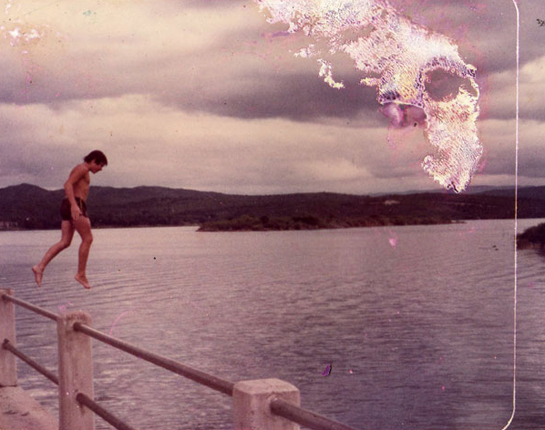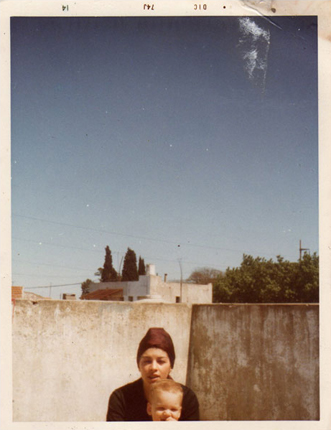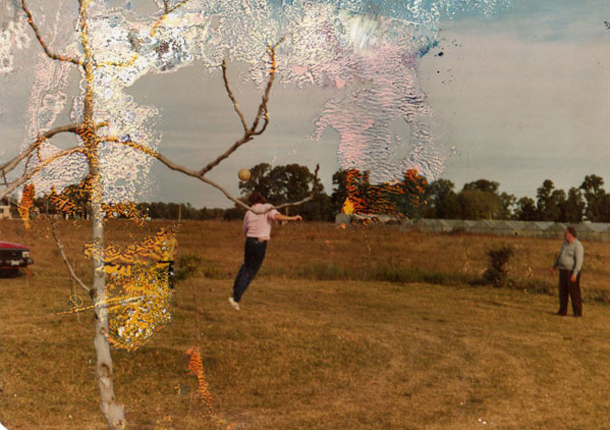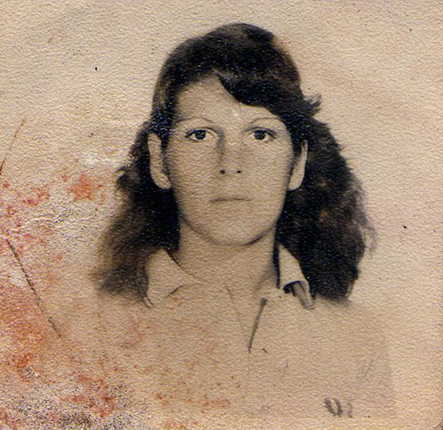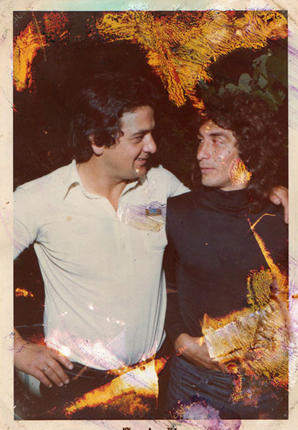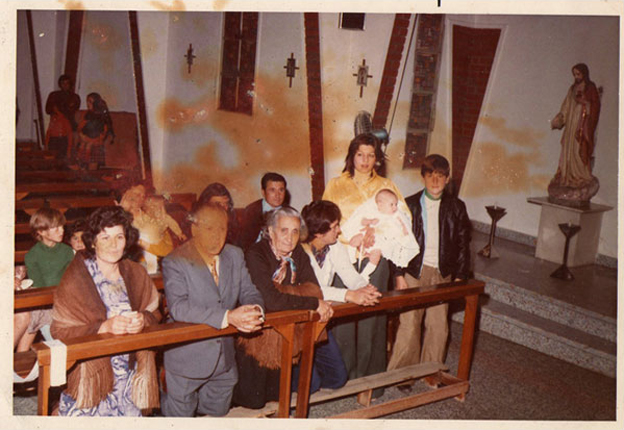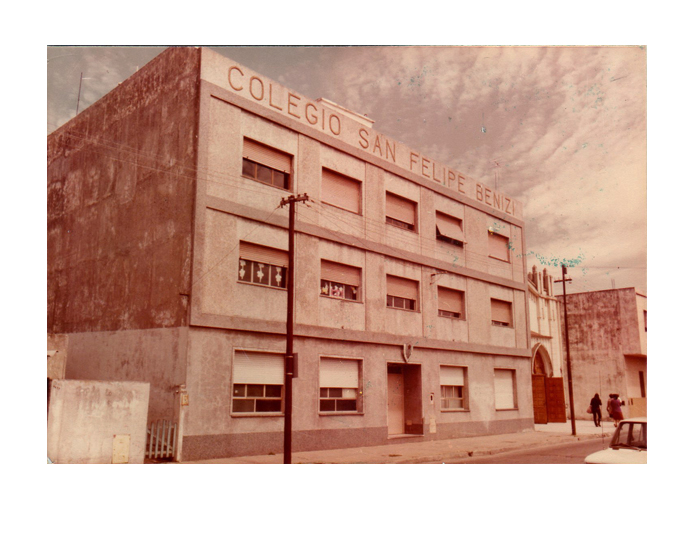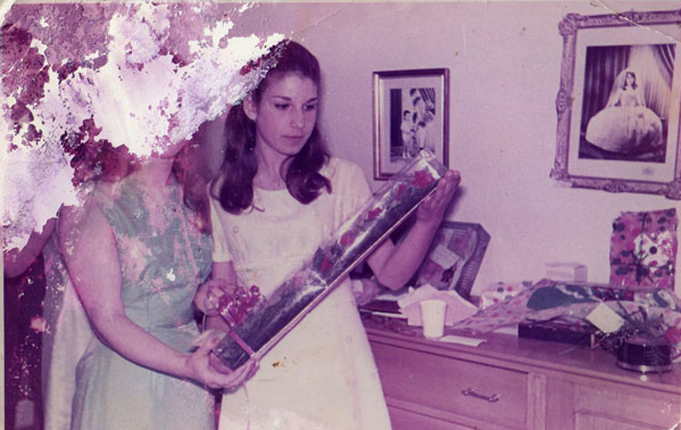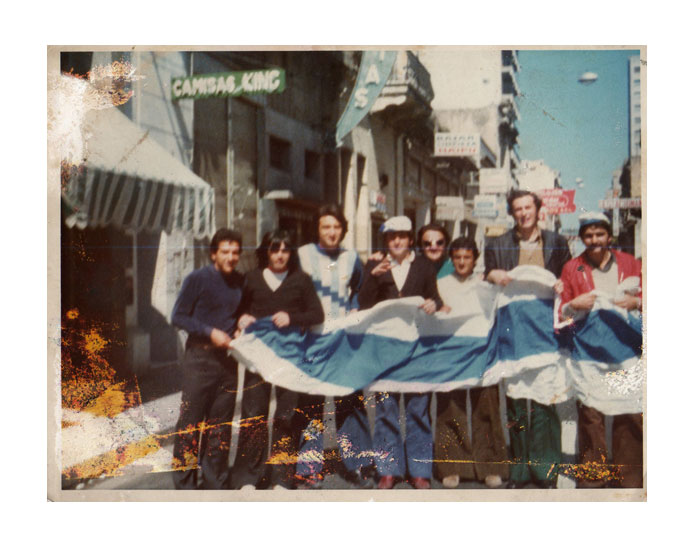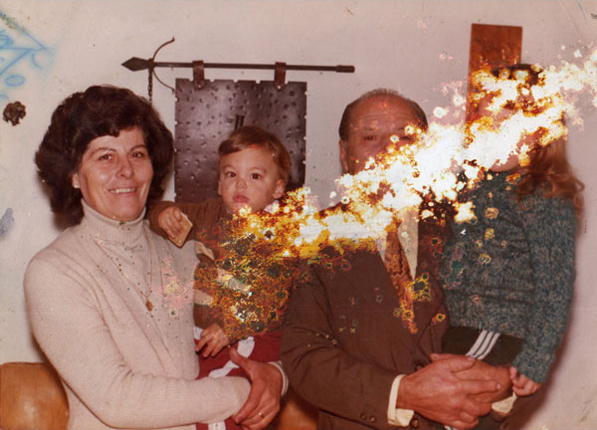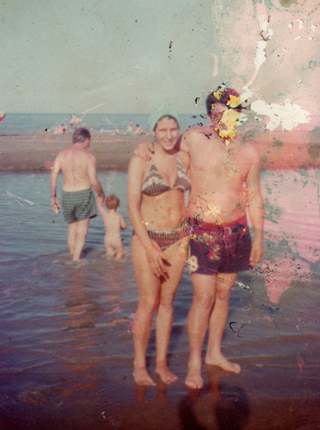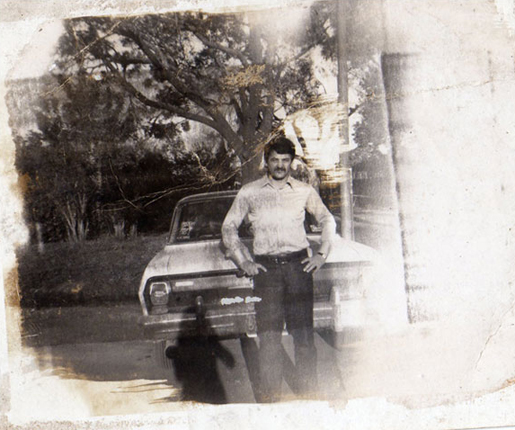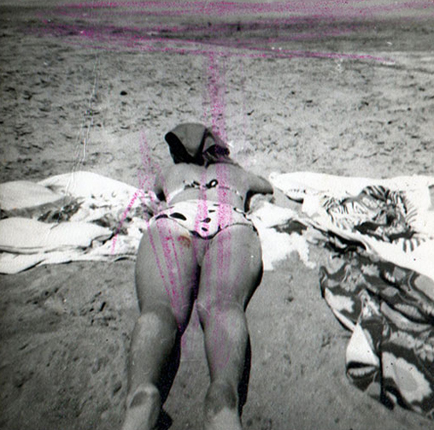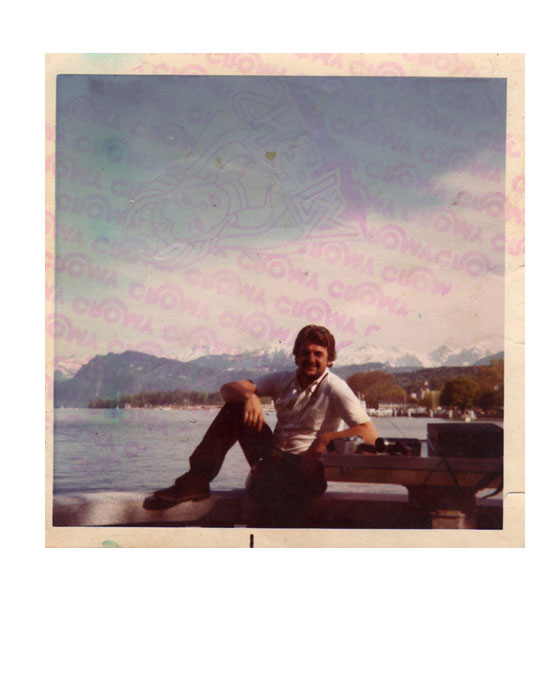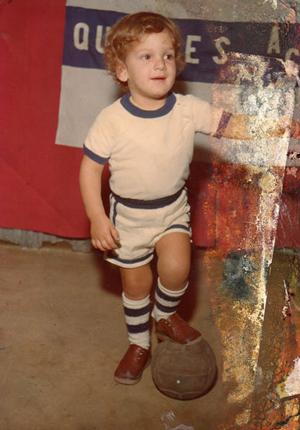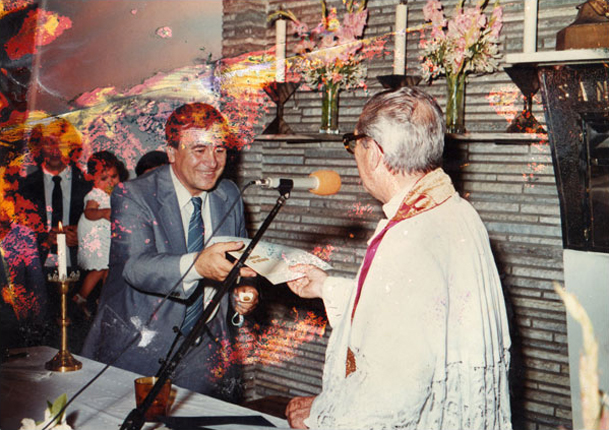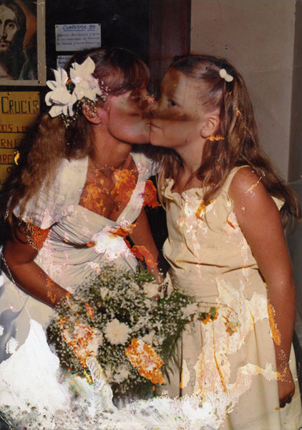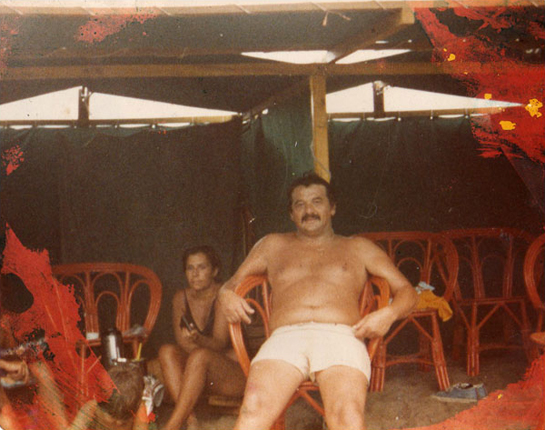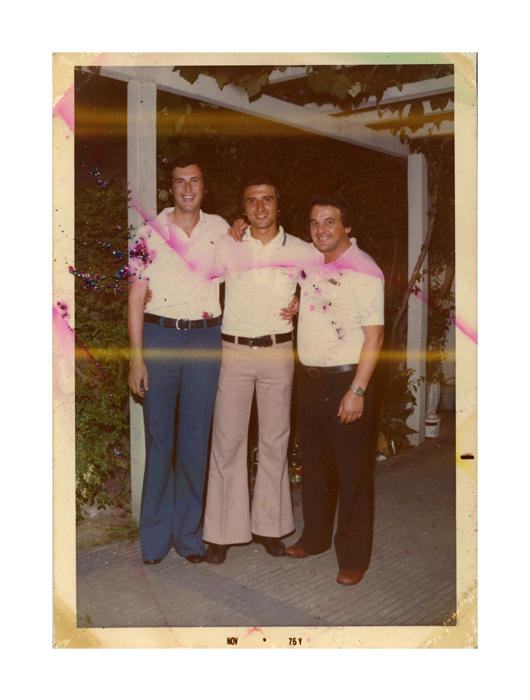A Box Full of Memories
Lightweight, inexpensive and easily recycled, shoeboxes are frequently used as repositories for memorabilia. For Seba Kurtis the contents of a shoebox is the closest thing he has to a family album, a circumstance laid down by his transitory past.
Kurtis’s family lost almost everything during the political and economic unrest in Argentina in the 1980s and then all over again in the first few years of this decade. After the second wave of Argentine financial turmoil Kurtis and his family sought work abroad, becoming illegal immigrants in Spain. There they lived an undercover life denuded of personal possessions until two years ago, when permission was finally granted for them to stay in Europe. Once free to travel again, Kurtis’s parents returned to Argentina to visit their relatives and recovered a shoebox of family photographs, which they brought back to Spain.
Kurtis’s Shoe Box project does not feature the box itself, rather the title is shorthand for its contents, the old prints and a roll of home movie film. Although badly water damaged, they retain a significance for Kurtis and his family far beyond their material worth: the last traces of a life, a time and a place left behind.
Entwined with Kurtis’s family’s sense of identity, the collection of found photographs is at its simplest an archive of primary sources. Archives are being rediscovered, re-presented and re-imagined by contemporary curators, photographers and artists, and their significance as historical sources, or evidence, is continually being assessed and questioned. The family album is the vernacular photographic archive in its most familiar form. Produced for private consumption by amateur photographers motivated by love rather than money, it is a repository of both personal and historical information, a distillation of identity and heritage.
Susan Sontag explains that through snapshots, ‘each family constructs a portrait chronicle of itself – a portable kit of images that bears witness to its connectedness’. The language of the family album is personal and of course speaks most powerfully to those whose lives are caught within it. At its most essential the family photo album is a multiple memory jog, a fractured narrative of frozen moments, tied together by personal recollection. For Kurtis and his family the shoebox represents their history, its survival embodies their own and with few belongings directly referencing their collective past, its role is almost talismanic. However, for the viewer, much of this emotional resonance remains a mystery, reliant as it is on individual memory. In presenting the Shoe Box prints, Kurtis acknowledges that lack by choosing to offer no captions. Who other than Kurtis’s family will care which aunt or baby a photograph depicts. Even with the family information, the true power of this collection of prints would still elude any third-party observer.
Yet, despite their anonymity, family albums still contain a more general social history. The subjects in Kurtis’s photographs wear outmoded fashions, flares and facial hair dating them to the Seventies. One image shows a group of men and boys proudly displaying the white and blue of the Argentine flag, ensuring that the viewer can guess the nationality of this family. As well as recording the historical appearance of things, information can be gleaned about leisure pursuits: sunbathing, swimming, a love of the outdoors and football are all recorded for posterity. The church also seems central, as in any good South American family – a school depicted in one image is attached to a church, in another the family has gathered for what looks like a christening, a further picture depicts two young girls dressed up for first communion. Along with these specific details many of the pictures employ familiar compositions, unconsciously replicated in family albums across time and nationality: smiling grandparents holding a baby, groups of friends, records of holidays or special events. Such generic subject matter illustrates our common desire to show domestic happiness and record aspirations in family photography. The amateur photographer doesn’t reach for a camera at times of strife, instead he prefers to record moments of achievement or good times for posterity. By doing so he records the past selectively rather than truly reflecting reality.
As a photographer Kurtis’s interest in the Shoe Box prints stems from the effects of time and water damage on the photographs. The effect accentuates their slippage between history and memory: ‘I was attracted to them, the traces of other pictures, emulsion, colours… photos that we never will see again, but they leave a mark…’ The abstract patterns of the Shoe Box prints also bring to our attention the photograph as object and chemistry, as well as image. Analogue printing, particularly inexpensive, colour printing for public consumption, was anything but archival. While not entirely throw-away it did have an inbuilt obsolescence. Kurtis’s
presentation of this work to date has been either online or in the form of digital prints. As for his decision not to include any visual record of the shoebox itself, his interest has been in exploring the appearance of the prints rather than presenting them in three dimensions.
Text: Sophie Wright

